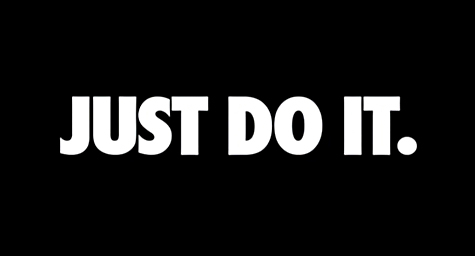In 1976, Gary Gilmore robbed and killed a gas station worker and then a hotel worker in Utah. After being turned in by a cousin whom he fled to for medical help, he was tried, convicted, and sentenced to death.
Facing a five-man firing squad a few months later, he was asked if he had any last words:
“Let’s do it,” he answered.
Maybe those words don’t ring a bell.
But from this most inauspicious origin came one of the most ubiquitous marketing/branding slogans in the world, plastered across ads, t-shirts, collateral, and pop media over the past 34 years.
The story goes like this: Dan Wieden, legendary head of ad agency Wieden & Kennedy, was pitching a campaign to a client ten years after Gilmore’s execution. The night before the meeting, he thought the disparate ads created by his creative teams needed something to tie them all together. With hours to go, and telling them they could throw the phrase out later, he thought of Gilmore’s final words, and adapted them.

Maybe you’ve heard of his version:
From “Let’s do it,” Weiden created “Just Do It,” what has been called “the last great marketing slogan.” It’s a slogan that’s recognizable across generations and continents.
So, what lessons can we take from Nike and Wieden?
- A slogan on its own means little: Today, “Just Do It” makes you immediately think of Nike. That wasn’t the case in 1986. “Just Do It” doesn’t work just because of those three words — it was the brilliant, strategic creative deployed alongside the slogan and repeated again and again that gave it force, energy, and generational brand equity.
- A strong slogan connects the “big idea” to the core brand: The very first “Just Do It” ad didn’t feature Michael Jordan. It featured Walter Stack, an 80-year-old who ran 17 miles every day, as a commentary on athletic achievement being attainable to everyone. Other ads from that initial campaign backed up that ideal, including Priscilla Welch, a former pack-a-day smoker who won the NYC Marathon at 42, seven years after giving up the habit and picking up jogging. In fact, those early ads barely referenced the product at all, instead sticking to Nike’s brand mantra: “Authentic athletic performance.”
- A convincing slogan captures your audience’s motivations: The initial success — and brilliance — of the first “Just Do It” campaigns were how they tied into the mindset of customers by capturing the 1980’s individualistic, “I can do anything” ethos. It motivated and reaffirmed the confidence of regular consumers to stay active and opened up the market to those who didn’t consider themselves athletic but wanted to be. The magic of a good slogan is how it inspires audiences to act.
- It’s not just the slogan, it’s the repetition: “Just Do It” is a good slogan, but what has made it so recognizable has been its continued use over time. Building equity through repeated use is equally as important as the slogan itself; it’s the consistent usage and equity earned across years and generations that makes slogans as powerful as they are.
What does this mean for your brand?
What worked for Nike — and other brands with successful, identifiable slogans — can work for you too, no matter what scale you operate on. By building a slogan that inspires and motivates your audience, you develop a deeper connection with them. By tying a slogan into your core brand purpose, you begin telling a story about what you stand for. And by using that slogan clearly and consistently over time, you build brand equity, meaning, and loyalty that can carry you forward.
So what now?
Just Do It.